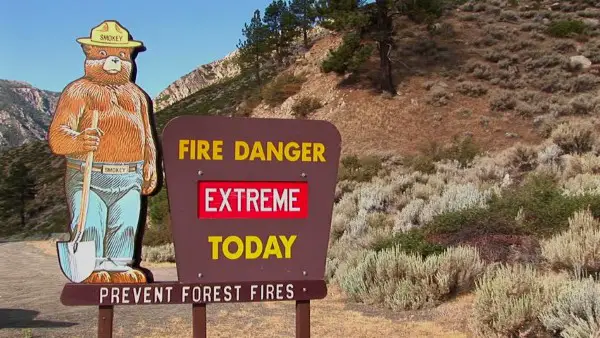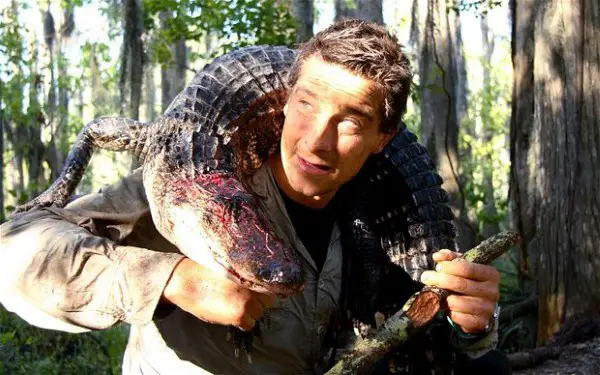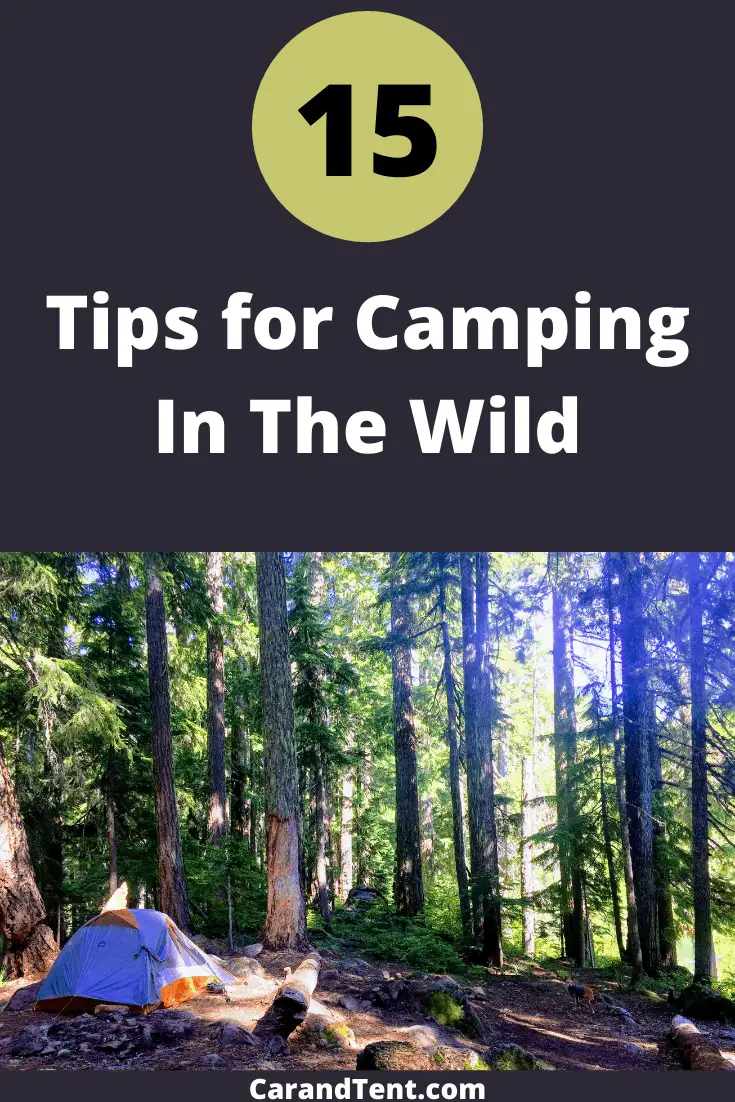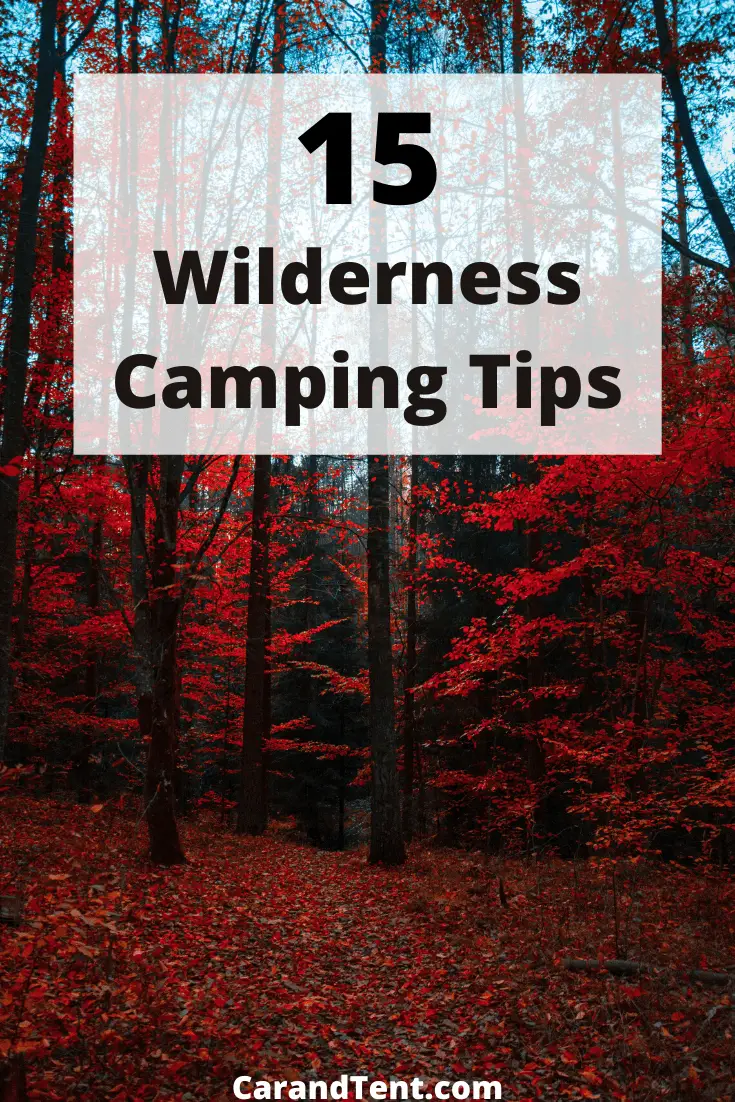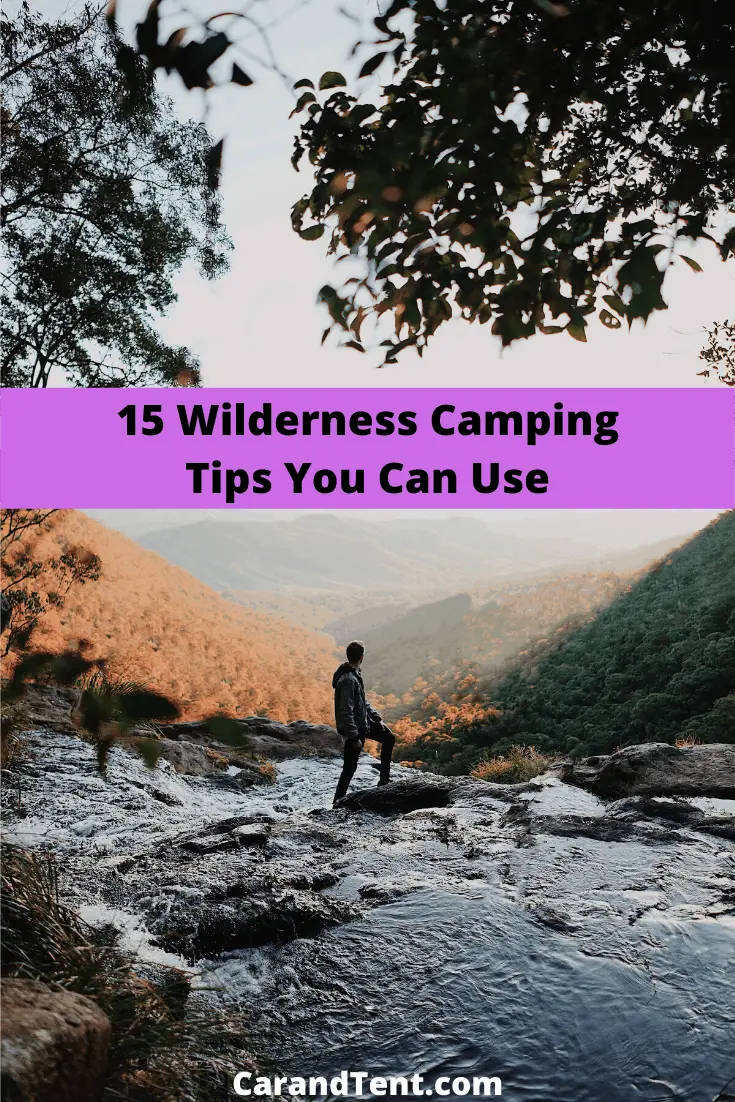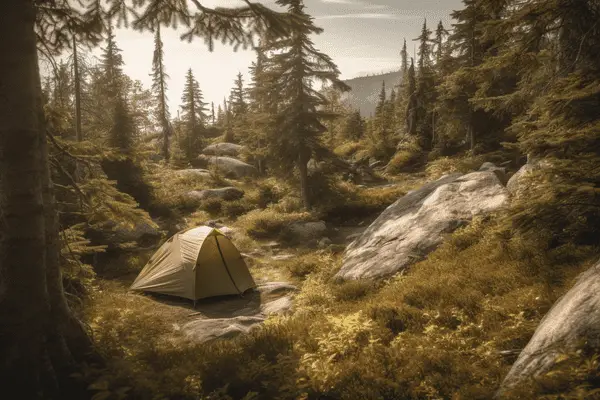
Camping in the woods can be a little nerve-wracking the first time you do it. After all, you don’t have the safety of a designated campsite and at first glance, it seems like you’ll have to fend for yourself. However, camping in the woods can definitely be both a fun and safe experience that everyone should get to have at least once in their lifetime.
In this post, I’ll teach you how to camp in the woods by giving you my best wilderness camping tips.
Table of Contents
Don’t Make This Your First Camping Trip
There are many different ways to go camping but wilderness camping is the most difficult. All camping requires you to have certain gear and a certain amount of knowledge. At a minimum, you need to know what gear to bring, how to use your gear, and how to keep your food safe from animals.
However, at a state park or campground, you won’t have to worry too much about making your campsite safe, getting stranded, or getting lost out in the woods. You also won’t have to worry quite as much about animal attacks as rangers will be on the lookout for dangerous predators.
Depending on which park you go to, you might have access to flush toilets and showers so you won’t have to worry about changing your personal hygiene needs too much.
When you go camping in the wild, you’re responsible for getting to and from your campsite safely, you’re responsible for making sure your campsite is set up in a safe area, and you won’t have any modern amenities or any trained professionals to help you get out of a bad situation. Why add this kind of complexity to your first camping trip?
Go to a state or national park and get to know your gear and get to know what you need and don’t need when camping and then move onto wilderness camping. Doing so just might save your life.
Start Small
Don’t make your first wilderness camping trip a month-long adventure in the woods. Plan a short weekend trip with a minimal amount of backpacking and slowly increase the number of days you head out for each trip. This is especially true if you’re planning on camping in the woods alone.
Forget something on an overnight trip and it might just be a minor inconvenience. Forget something important on a month-long or even a week-long trip and you might be putting your safety in jeopardy.
Don’t Go Alone
Solo camping in the woods can be a magical experience. The solitude and the chance to be alone with nature is something many people never get to experience. I’d highly recommend a solo wilderness camping trip but not for your first time out.
You’ll want to go camping in the woods with people who have already done so and who know what they’re doing. This will give you a chance to ask questions and to learn new skills. Use this opportunity to learn about the area and to find out the best ways to set up a campsite.
What if your friends don’t camp?
That is perfectly normal. Not everyone likes to camp but there are plenty of people who do. Use this as an opportunity to make a few new friends. Join a camping or hiking group and you’re sure to find some people to go camping with.
Research the Area
Every area of the country is different and the challenges you face in one area might be completely different than the challenges you’ll face in another area. Get to know what the weather, wildlife, plant life, and local areas are like before heading off into the woods.
You might find that certain areas aren’t even legal to camp in during certain times of the year. Even if these places are legal to camp in year-round, you might find that there are certain dangers during certain times of the year that aren’t there normally.
For example, would you want to go camping in the woods in a popular forest on the opening day of hunting season? If you did decide to go wilderness camping during hunting season you’d probably want to make sure you wore bright orange gear to keep you from being inadvertently shot wouldn’t you?
During other times of the year, you might have to worry about the black fly season. As long as you’re well prepared, this isn’t necessarily a dangerous time of the year for campers but it could be annoying and maybe you’d want to take more protection against insects than you would during other times of the year. SectionHiker.com reports that if you’re unprepared for the black fly season, you could actually die.
Find Out About Fires
Just because you’re camping out in the wild, doesn’t mean it is OK to have a campfire. Find out what the current fire risk is and follow the rules. These rules are in place for a reason and you don’t want to have a campfire when the risk of forest fires is at an elevated level.
In some state and national forests, you may actually have to get a permit to build a campfire. You might not be able to get this permit if the fire risk high, very high, or extreme. Do some research on the forest you’ll be staying in so that you can get a fire permit to build a campfire.
Know The Weather and Elevation
The weather will have a big impact on what you will and will not need to bring on your camping trip. Unfortunately, the local temperatures may not always tell the whole story.
For example, temperatures are often colder in the woods and around bodies of water, especially at night. They’re also much colder in areas with high elevations. If your trip will take you ten miles up into the mountains, you may end up camping in temperatures that are significantly colder than the surrounding areas.
Share Your Plans with Local Rangers
Even forests that are free to camp in might still require you to get a permit. Even if you don’t need to get a permit for camping in the forest you’ve chosen, you should probably check in with the rangers anyway. Let them know your plans and it will be easier for them to rescue you in an emergency.
You can even set something up with the ranger station so that if you don’t check back with them on a certain date they’ll assume something happened to you and will go out to retrieve you. Not only this but talking with the rangers beforehand can give you valuable knowledge and insights into the area you’ll be camping in.
It isn’t just about safety either. Rangers have a lot of information on the area that they’re usually more than willing to share with anyone who calls. Give them a call or pay them a visit and they might tell you where all the best places to go and see things are.
For example, are you interested in seeing a certain animal while you’re out camping? Let the rangers know and they’ll tell you where they lost saw one. Want to know the best place to go for taking landscape photography? Tell the rangers about it and you’ll probably end up with a long list of great places to go to take landscape photography.
Get Vaccinated
This is one tip that many people overlook but it is one of the CDC’s top camping tips. One vaccination that is easy to forget is the vaccination for tetanus.
However, if you’re camping in the northeastern part of the country you might very well be camping in a forest that used to be a town or the site of an old mining or logging company. The chances of coming into contact with old metal might be higher than you think.
Getting vaccinated beforehand also reduces the chances that you’ll end up getting sick just before your trip. A simple flu vaccine might mean the difference between you having a great time camping versus you not be able to go at all because you’re just too sick with the flu.
Take Wildlife Precautions
Different areas of the country will have different wildlife risks but all areas will have at least a few animals you need to worry about. In southern regions, you might have snakes, alligators, bears, and even panthers.
Northern regions could have bears, snakes, and coyotes. Even further up north, you might run into polar bears and wolves. Head out west and you’ll have cougars, bears, and snakes to deal with while camping.
How to Avoid Snakes While Camping and Hiking
Even smaller animals like raccoons, skunks, badgers, rats and even mice can be a threat to your safety. Imagine you’re a three-day hike from civilization and some small animals eat all of your food and put holes in your tent because you decided to store your food inside the tent with you? You’d end having to hike for three days before you could eat again.
To protect yourself against wildlife:
- Follow proper food storage guidelines.
- Choose a campsite away from large predators.
- Bring bear spray.
When you talk to the rangers they’ll be able to tell you what animals to look out for and what to bring to help protect yourself against them. They’ll also be able to recommend gear for storing food in the area as well.
Bugs and insects can also be a threat to your safety. Poisonous spiders, scorpions, mosquitos, fire ants, bees, and ticks can all end up killing you. Do your research and take precautions against all of these nature inhabitants and you’ll have a much better trip.

Know What to Do During an Animal Attack
Animal attacks are rare. In fact, you’re more likely to be attacked by a human on your way home than you are to be attacked by an animal in the woods. This doesn’t mean you shouldn’t be prepared to deal with an attack though.
It is impossible to know exactly how an animal will react during an attack but there are some guidelines that you can follow to help increase your chances of survival.
For example, if you’re hiking and you happen to surprise a grizzly bear walking with her cubs she most likely isn’t attacking you for food. In this case, experts recommend you curl up and protect your vitals until the attack stops.
Camping with Bears – How to Stay Safe
There are tips like this for all animals in all types of different situations so find out what animals you’ll be camping with and memorize what to do in the event of an attack.
Don’t Take Unnecessary Risks
Practicing with your knives and axes is something you ought to do while you’re at home. Accidentally cut yourself at home and you can call 911. Cut yourself while out in the woods and you may not make it back to town in time to get stitched up.
The same thing goes for jumping off rocks and trees or trying to see how close you can get to the wildlife. Alligator wrestling rarely ever ends well. In fact, even an angry deer can cause serious injuries to a human and in the woods you won’t have access to professional medical care.
Remember, when Bear Grylls is running around the forest like a mad man, he has an entire crew to support him. Don’t act like Bear Grylls when your camping in the woods. If you have to act like a television wilderness expert while out in the woods, act more like Les Stroud.
Know What to Pack
Again, the rangers can help you with this. In general, you’ll want to pack clothing and gear that is suited for the terrain and temperature that you’ll be camping in.
You’ll also want to pack enough food for the entire trip and enough water to get you to the next water source as well as some extra water in case the next water source doesn’t quite pan out. For example, you may be planning on getting water from a nearby stream that ends up not being there when you arrive.
Also, you could always lose your way while out hiking and you may not find the stream as quickly as you thought you would. Having some extra water might just keep you alive while you find your way again.
For more information on how much water to pack, see my post titled, “How Much Water to Bring When Camping“.
Don’t Bring Untested Gear
I love buying new gear. Buying new gear is fun and makes me feel like a kid with a brand new toy. After I buy the gear, I can’t wait to take it out and use it. You probably feel the same way.
Unfortunately, new gear doesn’t always work as well as you think it will. Sometimes you get a defective piece or sometimes you just aren’t familiar with it enough to get it working the first time you use it.
For this reason, it’s better that you test your gear out at home before you go camping in the woods. Once you’re proficient with your new gear you’ll know whether or not it has a place in your backpack.
The exception to this is for redundant gear. If you have extra space in your backpack and you want to pack that third lantern you just bought or you have some space in your pocket for that small multi-tool you just got and don’t need, then, by all means, bring it with you. Otherwise, leave the new gear at home until you’ve learned how to use it.
Choose a Safe Spot to Set Up Camp
As we talked about earlier, don’t camp near large predators or other animal habitats that could put you in danger. Camping near fire ants or bee nests is more trouble than it is worth.
Also, don’t camp under dead trees or by areas that might be subject to falling rocks. A tent just doesn’t provide much protection against tree branches and rocks.
Camping in low-lying areas or other areas that are prone to flooding is also a bad idea. You’ll be able to identify these areas as there will be a natural pathway that has clearly been chiseled out of the landscape by running water.
Choose a breezy spot to camp in when insect activity is high but don’t leave yourself too exposed as strong winds can often make sleeping less peaceful.
Be Prepared to Leave Early
Camping requires a good combination of preparation, skill, and luck. Sometimes luck just isn’t on our side and our camping trips go south very quickly. The weather forecast turns out to be all wrong, we hurt ourselves on the trail, or we forget to bring something important with us on our trip.
There is no shame in cutting a trip early. The old saying, “retreat and live to fight another day”, can often be applied to camping.
Related Questions
Is it legal to camp in the woods? You can legally camp in many state and national forests throughout the country. In some cases, you’ll have to get a permit before doing so.
The permit helps rangers keep track of forest use and also helps you in the event that a rescue needs to be performed.
Is it free to camp in the forest? Many state and national forests offer free wilderness camping. You can also camp for free on BLM land in deserts and even by beaches, lakes, and rivers.
Check with the local ranger stations to find out how and where to camp in your local woods.

